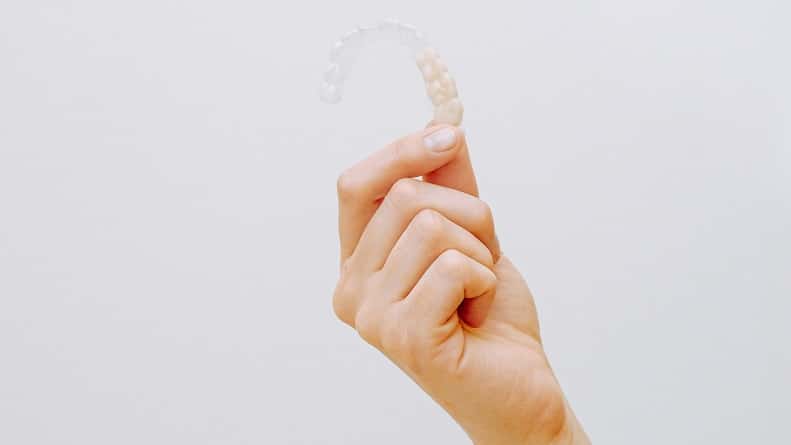Managing Pain from Invisalign Braces
Braces are an incredibly common orthodontic procedure, with an estimated 4.5 million Americans currently wearing braces according to the American Association of Orthodontics. 4 out of 5 of those patients wearing braces are adolescents, which is typically the recommended age for correcting teeth alignment. However, with the rising cost of orthodontia, many American’s go into adulthood still requiring braces to correct their teeth alignment.
Since the 1990s, demand for adult teeth-straightening procedures has risen over 58%. One of the most popular solutions for adults has been Invisalign, which is a less obstructive aligner with a more subtle appearance than traditional metal braces. However, despite the device’s ability to be removed and clear appearance, many of the side effects that adolescents complain of with metal braces are consistent in Invisalign’s teeth straightening solution as well.
The most common side effect of both braces and clear aligners, like Invisalign, is pain associated with the slow re-aligning of the teeth. Whenever a patient needs to have the braces tightened or a patient gets a new aligner, there is some discomfort expected for the next day or so. This is a necessary part of re-aligning the teeth, and is often done about every 30 days or so. We don’t want this discomfort to dissuade you from pursuing your ideal smile, so we’ve compiled a list below of tips & tricks for how to manage this pain.
Time Your New Aligner with Bedtime
The main cause of long term discomfort associated with clear aligners is when it comes time to switch to a new aligner. Each new aligner is a step towards moving your teeth into their ideal placement, so it cannot be avoided. However, you can avoid some of the pain associated with switching you aligner by simply planning these switches to occur at your bedtime. Most of the pain associated with a new aligner comes in the first few hours after you put it in, and gradually recedes as your mouth becomes used to the new alignment. Sleep through these first few hours by putting the new aligner in just before bed.
Jaw Massage
It is common to start clenching our muscles as soon as we begin to feel discomfort. When it comes to our mouths, much of this tension is held in our jaws. Clenching your jaw can lead to more pain in the short term, and can cause new dental issues in the long run if it becomes a common practice. Start relieving the pain your mouth is feeling by dealing with this side effect and loosening those muscles. We’d recommend a soft massage of your jaw using one or two fingers and small circular motions.
Mild Painkillers
If you find that the pain associated with your aligners is disruptive to either your life or your sleep, taking a mild over-the-counter painkiller can help relieve the discomfort. Acetaminophen, ibuprofen and aspirin are all effective painkillers for Invisalign treatment. As always with mediations, make sure you talk to Dr. Bowyer and his team about your plans for pain relief to ensure that your know your best course of action.
Chew Soft Foods
It may be counter-intuitive, but the action of chewing can actually help relieve the pain and tension that has been a result of a new aligner. The more you move your mouth, the more your teeth will adjust to their new position, and the less discomfort you will feel. However, the foods that you choose to eat when exercising your mouth make a big difference in the impact. Avoid crunchy and hard foods like nuts, chips, or apples and instead opt for foods that allow you to chew softly. Soups, oatmeal, and yogurt are all good options when trying to find a soft food to help you relieve the pain.
Ice Cubes/Cold Compress
Numbing your teeth and gums with cold can be a great way to get some relief. Apply a cold compress, like an ice pack or frozen peas, to the outside of your mouth to generally numb your gums. Focus on the areas that are particularly painful when placing your compress.
Another method for numbing your gums is to suck on ice cubes. This should only be done if you can avoid crunching into the ice cubes, however. Ice cubes would be considered crunchy foods and there could be sharp edges created by chewing on them that will tear up the inside of your mouth, potentially leading to more discomfort.
——
The pain and discomfort that most patients feel from Invisalign braces is typically quite mild and shouldn’t discourage you from pursuing the smile you’ve always wanted. While there is minor pain, the straight teeth you are left with can help you avoid more painful dental work resulting from cavities or decay that is more common when teeth are crooked. If you have questions about Invisalign, please reach out to Dr. Bowyer’s office and we can set up a free consultation.
Call Us Today To Schedule Your Appointment:
(360) 253-2640

